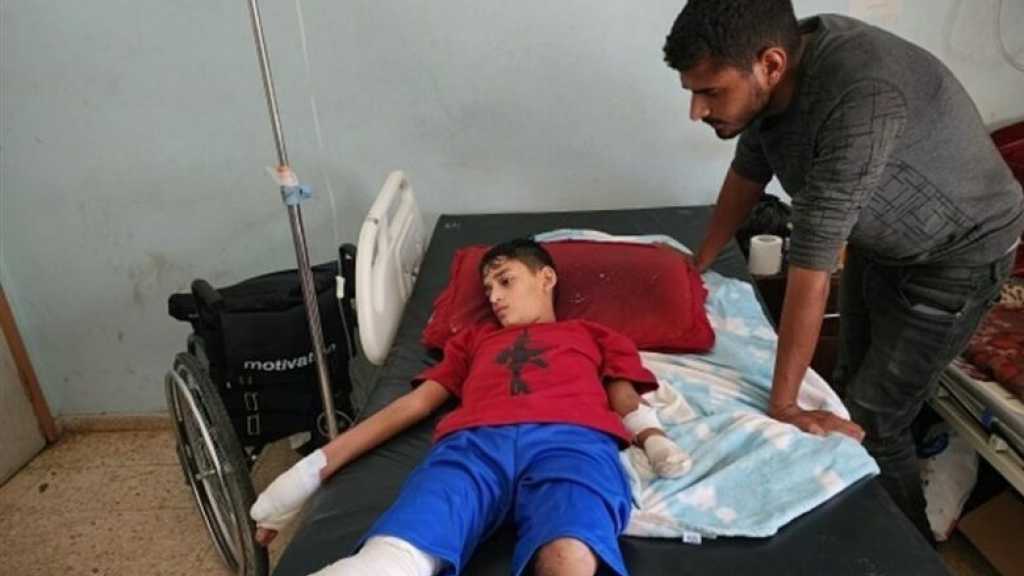AhlulBayt News Agency: A UN-backed assessment confirmed that almost half a million Palestinians across Gaza are still facing “catastrophic levels” of hunger and that a “high risk” of famine persists as long as the “Israeli” aggression on Gaza continues.
The amount of food and other aid allowed into the north has increased since May, and nutrition, water, sanitation and health services have been stepped up, the report says.
But it warns that food availability in the south and central Gaza has been significantly reduced due to the closure of the Rafah border crossing and the displacement of more than one million people from the city of Rafah since early May, when “Israel” launched a ground operation there.
The UN World Food Programm [WFP] said the report “paints a stark picture of ongoing hunger” and showed the critical importance of sustained humanitarian access.
UN officials have blamed the situation on “Israeli” military restrictions on aid deliveries, the ongoing hostilities and the breakdown of law and order.
In March, the IPC classified 677,000 Gazans - or 30% of the 2.2 million population - as being in Phase 5, including 165,000 people trapped in northern Gaza. It also projected that a famine was “imminent” in the north by the end of May because of conflict and the near-complete lack of humanitarian access.
The IPC assessment published on Tuesday says more than 495,000 Gazans, including 60,000 in the north, are still facing catastrophic hunger.
Although an estimated 20% of households in the north are in Phase 5, the thresholds of acute malnutrition and mortality have not been passed, it explains.
The World Health Organization said earlier this month that 32 deaths attributed to malnutrition, including 28 among children under five years old, had been reported by local health officials.
The IPC report warns that there continues to be “a high and sustained risk of famine across the whole Gaza Strip”, and that the improvement in April and May “should not allow room for complacency”.
The WFP said the “slight improvement” seen in the IPC report showed the difference that greater access could make, but stressed that the situation was “still desperate”.
“To truly turn the corner and prevent famine, adequate and sustained levels of humanitarian assistance must be provided,” it added.
Meanwhile, the head of the UN agency for Palestinian refugees [Unrwa] told reporters in Geneva that at least 10 children a day on average were losing one or both of their legs because of the war.
Philippe Lazzarini said that figure did not include children who had lost hands or arms, and that the amputations usually took place in what he described as “quite horrible conditions” and sometimes without anesthetic.
/129
The amount of food and other aid allowed into the north has increased since May, and nutrition, water, sanitation and health services have been stepped up, the report says.
But it warns that food availability in the south and central Gaza has been significantly reduced due to the closure of the Rafah border crossing and the displacement of more than one million people from the city of Rafah since early May, when “Israel” launched a ground operation there.
The UN World Food Programm [WFP] said the report “paints a stark picture of ongoing hunger” and showed the critical importance of sustained humanitarian access.
UN officials have blamed the situation on “Israeli” military restrictions on aid deliveries, the ongoing hostilities and the breakdown of law and order.
In March, the IPC classified 677,000 Gazans - or 30% of the 2.2 million population - as being in Phase 5, including 165,000 people trapped in northern Gaza. It also projected that a famine was “imminent” in the north by the end of May because of conflict and the near-complete lack of humanitarian access.
The IPC assessment published on Tuesday says more than 495,000 Gazans, including 60,000 in the north, are still facing catastrophic hunger.
Although an estimated 20% of households in the north are in Phase 5, the thresholds of acute malnutrition and mortality have not been passed, it explains.
The World Health Organization said earlier this month that 32 deaths attributed to malnutrition, including 28 among children under five years old, had been reported by local health officials.
The IPC report warns that there continues to be “a high and sustained risk of famine across the whole Gaza Strip”, and that the improvement in April and May “should not allow room for complacency”.
The WFP said the “slight improvement” seen in the IPC report showed the difference that greater access could make, but stressed that the situation was “still desperate”.
“To truly turn the corner and prevent famine, adequate and sustained levels of humanitarian assistance must be provided,” it added.
Meanwhile, the head of the UN agency for Palestinian refugees [Unrwa] told reporters in Geneva that at least 10 children a day on average were losing one or both of their legs because of the war.
Philippe Lazzarini said that figure did not include children who had lost hands or arms, and that the amputations usually took place in what he described as “quite horrible conditions” and sometimes without anesthetic.
/129

